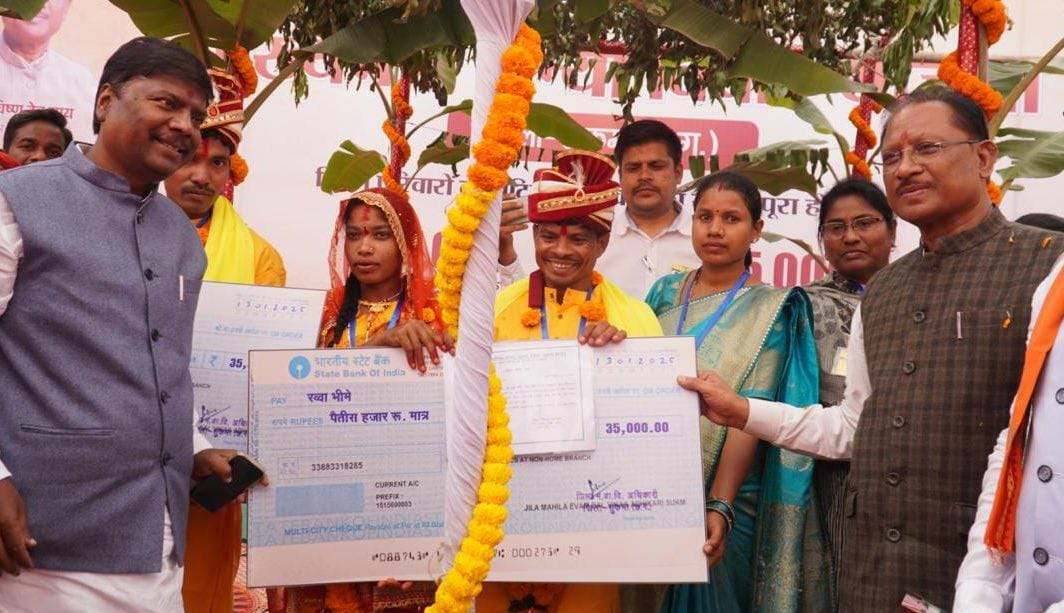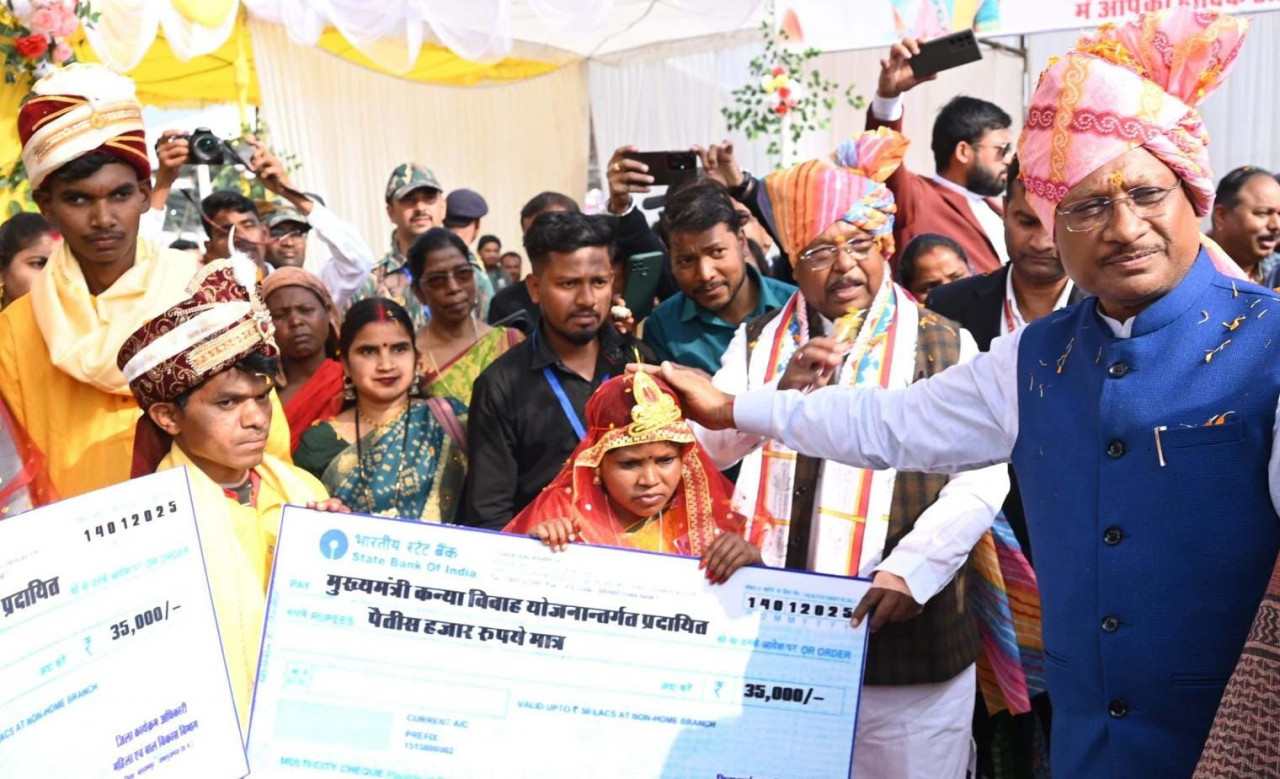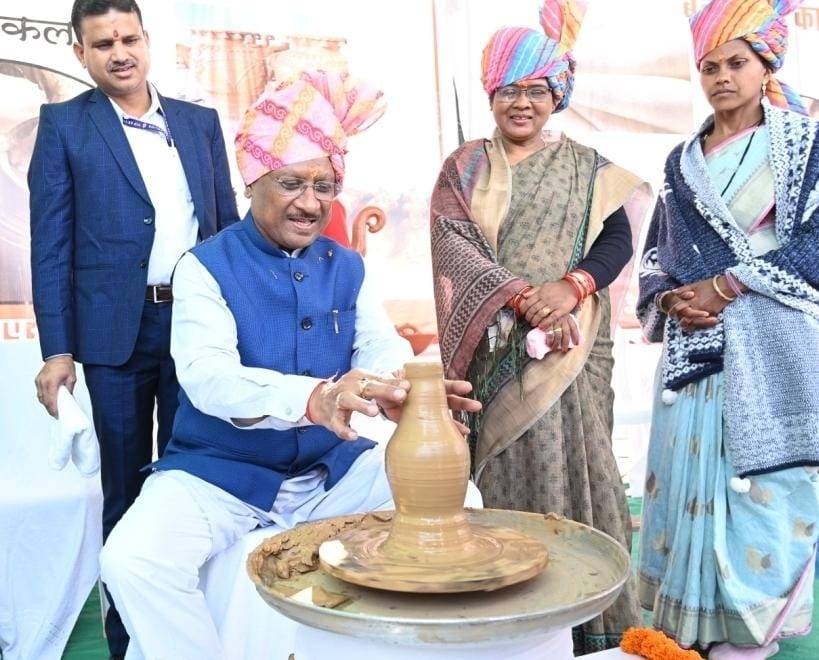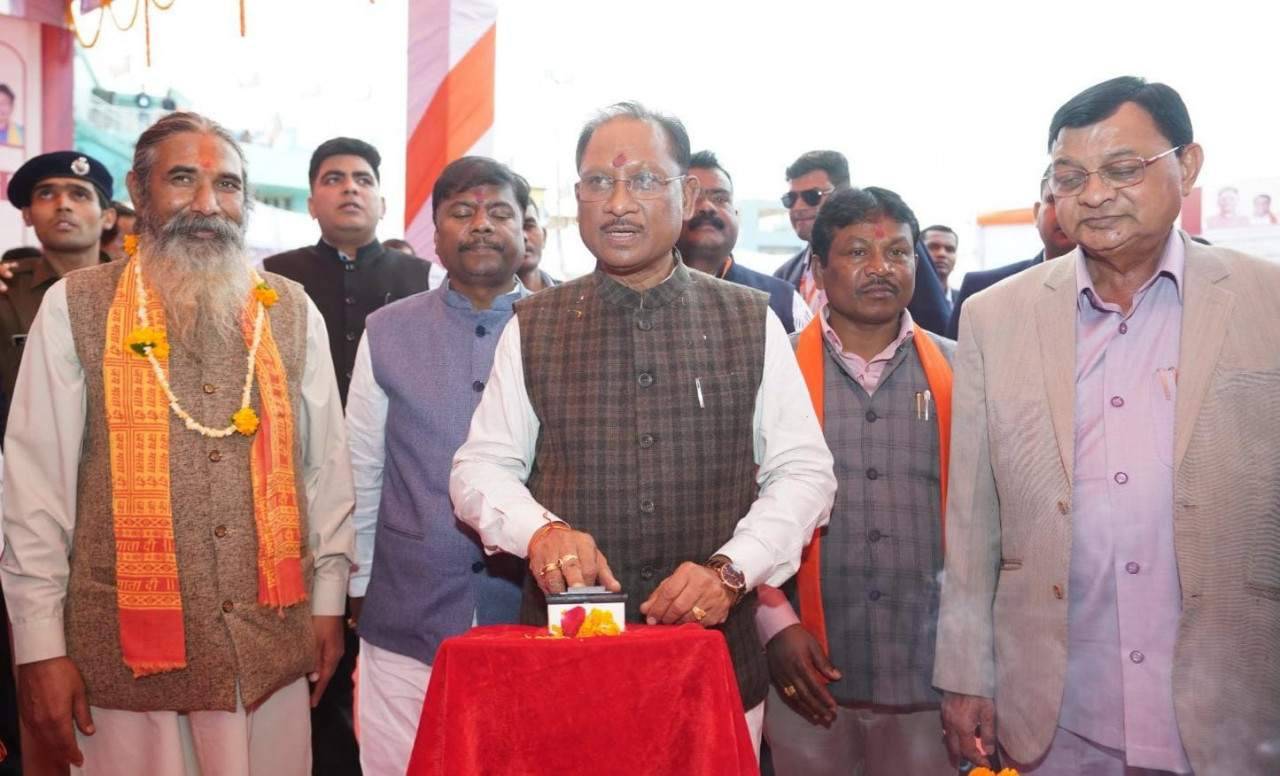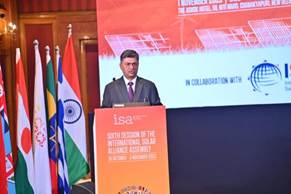
“Need research in alternative chemistries for energy storage”: ISA President Shri R. K. Singh
“Need to improve efficiency of solar, for making electricity more affordable to developing countries”
The Union Minister for Power and New & Renewable Energy and President of International Solar Alliance, Shri R. K. Singh has said that Net Zero will remain only a goal unless the world gets together to solve the problems of lack of diversification of solar manufacturing capacity and associated supply chains. Shri Singh, said this while addressing the inaugural session of the one-day High-level Conference on New Technologies for Clean Energy Transition, being organized in New Delhi today, November 1, 2023, on the sidelines of the Sixth Session of the International Solar Alliance Assembly. The conference is being organized jointly by the Ministry of New & Renewable Energy, the Government of India; the Asian Development Bank, and the International Solar Energy Society.
The ISA President also said that storage remains critical for greater utilization and Round-the-Clock provision of renewable energy. “Storage is a problem, since though the developed world kept talking about the need for energy transition, they did not do anything about it, they did not add storage and did not make progress on existing technologies. Most important, manufacturing capacity was not added. Today, about 90% of the solar manufacturing capacity is in one country, mostly dependent on one chemistry, i.e., lithium ion. This thus raises supply chain challenges, which came to the fore during the COVID-19 pandemic.” Shri Singh stressed that the round-the-clock renewable energy is not possible without storage.““Beyond a point, unless we have storage, adding renewable becomes wasteful. If we add capacity, we will have a huge quantity of solar energy during midday which gets wasted if we don’t have storage. As regards wind, when it is available, beyond a capacity, it will get wasted unless we have storage,” the Minister said.
The ISA President said that while India has thus emerged as a country with one of the fastest rates of energy transition, the country has been facing challenges, arising due to shortfalls in manufacturing capacity.
“Need research in alternative chemistries for storage, in adding manufacturing capacity”
The Power and New & Renewable Energy Minister said that these issues raise the need for investment and research in alternative chemistries and in building manufacturing capacities. “As a human race, we need to put our money in researching alternative chemistries, in setting up manufacturing capacities around the world. We in India have decided to do both. We came up with Production Linked Incentive Scheme for setting up manufacturing for polysilicon. By about 2030, we will have about 100 GW of manufacturing capacity for solar modules, out of which about 50 GW will be fully integrated with polysilicon and wafers.”
The ISA President, acknowledging that there have been huge advances in technology, said however that the problem again is in the supply chain. “Most of the advances have been in one country. All countries need to get together and make sure that all of us do research in advancing solar technology. Research needs to be far wider, without being located in only one country.”
“Need to improve efficiency of solar, for making electricity more affordable to developing countries”
The ISA President underlined the need to work on improving efficiencies of solar technologies, so that cost of electricity comes down, which would be especially required for developing countries. “When we talk about combating climate change, problems remain. We need to address these issues together. We need to increase efficiencies in solar; these need to go up more. When we began our journey, we used to need 5 acres of land for 1 MW solar, today we require 3.5 acres only. The cost of energy has come down but it will differ from country to country. If efficiency goes up, cost of electricity will come down, which will be good for developing countries where many of their people cannot pay for electricity. Even in India, we give subsidies to populations who are below a certain income level; this will be true for all developing countries. The financial capability of governments to give subsidy is limited; so increasing efficiency is absolutely important. This will ensure that poorer people can afford electricity without government subsidies.”
“Finance for Developing countries necessary for energy access and energy transition to happen”
The President of the ISA Assembly said that making finances available to developing countries through different instruments is key to ensuring energy transition. “Large parts of our world just do not have the finance to provide energy access to their people, let alone make energy transition. Until and unless we assist these countries with finance, access and transition are not going to happen.”
The ISA President highlighted the need for developed countries to keep their commitment towards financing green energy projects. “We need to make sure that we get financing from developed countries. This has not been happening. Pledges made in Kyoto and in Paris have not really materialized. Some green funds have come up, but they have not reached countries which need those funds. India does not need such funds, the Government of India has not had to spend a single penny in setting up infrastructure, but that will not happen in other countries. Green finance has to come; Yesterday, we got a number of pledges, which we are happy about. And the number will grow, and this has to happen.”
“India is confident of exceeding decarbonization targets set for year 2030”
The Minister told the international delegates, industry members and other delegates of the conference that India has been taking decisive steps to contribute to the fight against climate change, despite its low per capita emissions. “Our per capita emissions are one of the lowest in the world, about one third of the global average. Per capita emissions of the developed world are typically about three to four times the world average. Notwithstanding this, our government led by the Prime Minister has been very clear that we need to contribute towards the fight against climate change.”
Speaking about the road ahead, the Minister said that India is confident of exceeding the targets it has set for 2030. “Today, our established non-fossil-fuel capacity is approximately 186 GW, out of which about 179 GW is renewable, the remaining being nuclear. We have planned to add 50 GW of renewable capacity each year, going to 500 GW renewable capacity by 2030. We have pledged in Glasgow that we will have 50% of our established capacity coming from non-fossil-fuels by 2030, we are confident that we will able to achieve 65%. We will also achieve way beyond our target of reducing our emission intensity by 45% by 2030.”
“About 5.8 million tonnes of green ammonia manufacturing capacity coming up in India”
The Minister informed that about 5.8 million tonnes of manufacturing capacity of green ammonia are coming up in different parts of India. “We shall continue in our drive to decarbonize our economy. This is not only about renewables, but also about other technologies like green hydrogen and green ammonia. We are well on our way to emerging as one of the biggest manufacturers in the world of green hydrogen and green ammonia. Last time I checked, we had about 5.8 million tonnes of manufacturing capacity of green ammonia coming up in different parts of the country. This is just the beginning. We are going to put mandates on different departments to switch over to green hydrogen and green ammonia, whether it is for fertilizers, refining, or any other sphere where fossil fuels are required.”
Secretary, New & Renewable Energy, Shri Bhupinder Singh Bhalla; President, International Solar Energy Society, Dr Dave Renné; Director General, South Asia Department, Asian Development Bank, Mr Kenichi Yokoyama; and Director General, ISA, Dr. Ajay Mathur too addressed the opening plenary session of the conference.
Global Solar Reports on Technology, Investments & Markets – second edition; and ISA ADB NEDO Report – “A Roadmap for Developing and Scaling the Green Hydrogen Ecosystem” were also released at the session.
The overarching goal of the High-level Conference on New Technologies for Clean Energy Transition is to translate dialogue into action. The Conference is being attended by the Ministerial delegations of the ISA Member Countries, policymakers, experts, and industry leaders. By fostering collaboration, sparking innovation, and sharing knowledge, the Conference aims to drive real-world change and make significant strides toward achieving global climate goals. The focus is to make solar energy the energy of choice, reducing carbon emissions, expanding energy access, and bolstering economic growth in the process.


